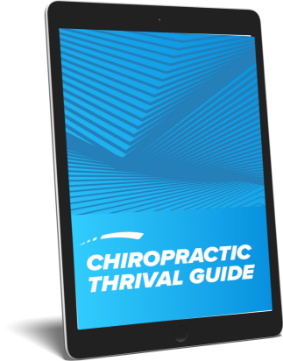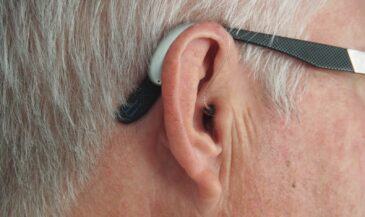By Dr. Christopher Kent
In his book “The Wellness Revolution” [1], economist Paul Zane Pilzer predicts that wellness will become the next trillion-dollar industry. According to Pilzer, wellness is “not about a fad or trend, it’s about a new and infinite need infusing itself into the way we eat, exercise, sleep, work, save, age, and almost every other aspect of our lives.”
Pilzer succinctly articulates the difference between sick care and health care: “The sickness business is reactive. Despite its enormous size, people become customers only when they are stricken by and react to a specific condition or complaint…the wellness business is proactive. People voluntarily become customers — to feel healthier, to reduce the effects of aging, and to avoid becoming customers of the sickness business. Everyone wants to be a customer of this earlier-stage approach to health.”
As the culture moves in a direction seeking behaviors that enhance well-being, there will be those who attempt to fit old paradigms with new clothes. For example, factions in medicine are promoting early detection protocols as “wellness” services.
Such services may include such things as screening for hypertension, cancer, or other medical conditions. While there is a place for early disease detection, it should not be confused with a wellness strategy.
- Wellness Paradigms
- Allopathic
- Chiropractic
- Goal
- Prevention and early detection of disease
- Maximize the expression on innate potential
- Strategy
- Passive
- Active
- Motive
- Fear
- Empowerment
- Practitioner role
- Dominant
- Partner/Coach
- How delivered
- Event
- Process
- Temporal profile
- Episodic
- Lifetime
- Criteria
- Based on “normal” values and epidemiologic data
- Goals set by the individual
Similarly, some medical and chiropractic practitioners employ fear-driven preventive strategies. People are encouraged to get their spines checked, or control their blood pressure because they fear the consequences of not doing so. As with strategies based upon the early detection of disease, such approaches should not be confused with wellness care.
What then is wellness? The Merriam-Webster online dictionary defines wellness simply: “The quality or state of being in good health especially as an actively sought goal.” [2]
Arizona State University has a more comprehensive definition: “Wellness is an active, lifelong process of becoming aware of choices and making decisions toward a more balanced and fulfilling life. Wellness involves choices about our lives and our priorities that determine our lifestyles. The wellness concept at ASU is centered on connections and the idea that the mind, body, spirit and community are all interrelated and interdependent.” [3]
The National Wellness Institute definition is as follows:
“Wellness is an active process of becoming aware of and making choices toward a more successful existence.
The key words in this first sentence are process, aware, choices and success.
- Process means that we never arrive at a point where there is no possibility of improving.
- Aware means that we are by our nature continuously seeking more information about how we can improve.
- Choices means that we have considered a variety of options and select those that seem to be in our best interest.
- Success is determined by each individual to their personal collection of accomplishments for their life.” [4]
Finally, consider the elements of this definition proposed by Travis:
“Wellness is a choice — a decision you make towards optimal health. Wellness is a way of life — a lifestyle you design to achieve your highest potential for well being. Wellness is a process — a developing awareness that there is no end point, but that health and happiness are possible in each moment, here and now. Wellness is a positive acceptance of oneself. Wellness is the interaction of the body, mind and spirit — the appreciation that everything we do, think, feel, and believe has an impact on our state of health.”
These definitions embrace a vision of wellness grounded in empowerment, choice, and awareness. The wellness concepts sharply contrast with those of the fear driven, patient passive, episodic strategies of early detection, prevention, and maintenance.
The chiropractic profession is perfectly positioned to lead the wellness beneficial, and to reap the benefits, material and spiritual, of accepting that challenge. Vertebral subluxations may produce dysafferentation, resulting in aberrant perceptions of the internal and external environments. The inevitable consequence is a distorted world view. Furthermore, efferent interference, associated with expression, interferes with our responses to internal and external change. Vertebral subluxations compromise our ability to experience life to our fullest potential.
By addressing vertebral subluxations, and the physical, biochemical, and emotional distress that cause such subluxations, a person seeking wellness care enhances their life experience. A wellness patient does not seek merely to maintain the status quo, return to pre-injury status, or prevent illness. Such an individual recognizes that chiropractic care is a lifelong process — a way of life — that is an integral component of a global strategy for human empowerment.
References
1. Pilzer PZ: “The Wellness Revolution.” John Wiley and Sons. New York . 2002.
2. www.m-w.com/home.htm
3. www.asu.edu/upsa/wellness/definition.html
4. www.nationalwellness.org/NWA/definitionofwellness.htm
5. www.sasked.gov.sk.ca/docs/wellness/defini.html






























































































































































